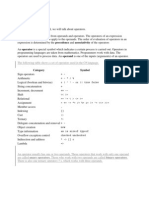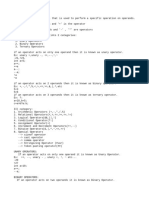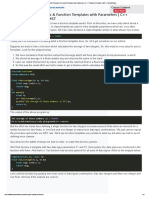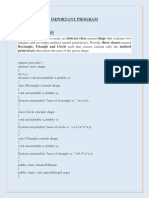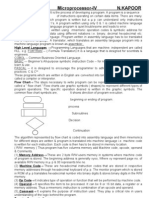0% found this document useful (0 votes)
7 views15 pagesLecture 3
The document provides an overview of operators in C#, including arithmetic, relational, logical, and assignment operators, along with examples for each type. It also covers string handling in C#, demonstrating string concatenation and the use of special characters in output. The content is part of a lecture for a Foundation Certification in IT course.
Uploaded by
used.subtype-4eCopyright
© © All Rights Reserved
We take content rights seriously. If you suspect this is your content, claim it here.
Available Formats
Download as PDF, TXT or read online on Scribd
0% found this document useful (0 votes)
7 views15 pagesLecture 3
The document provides an overview of operators in C#, including arithmetic, relational, logical, and assignment operators, along with examples for each type. It also covers string handling in C#, demonstrating string concatenation and the use of special characters in output. The content is part of a lecture for a Foundation Certification in IT course.
Uploaded by
used.subtype-4eCopyright
© © All Rights Reserved
We take content rights seriously. If you suspect this is your content, claim it here.
Available Formats
Download as PDF, TXT or read online on Scribd
/ 15









